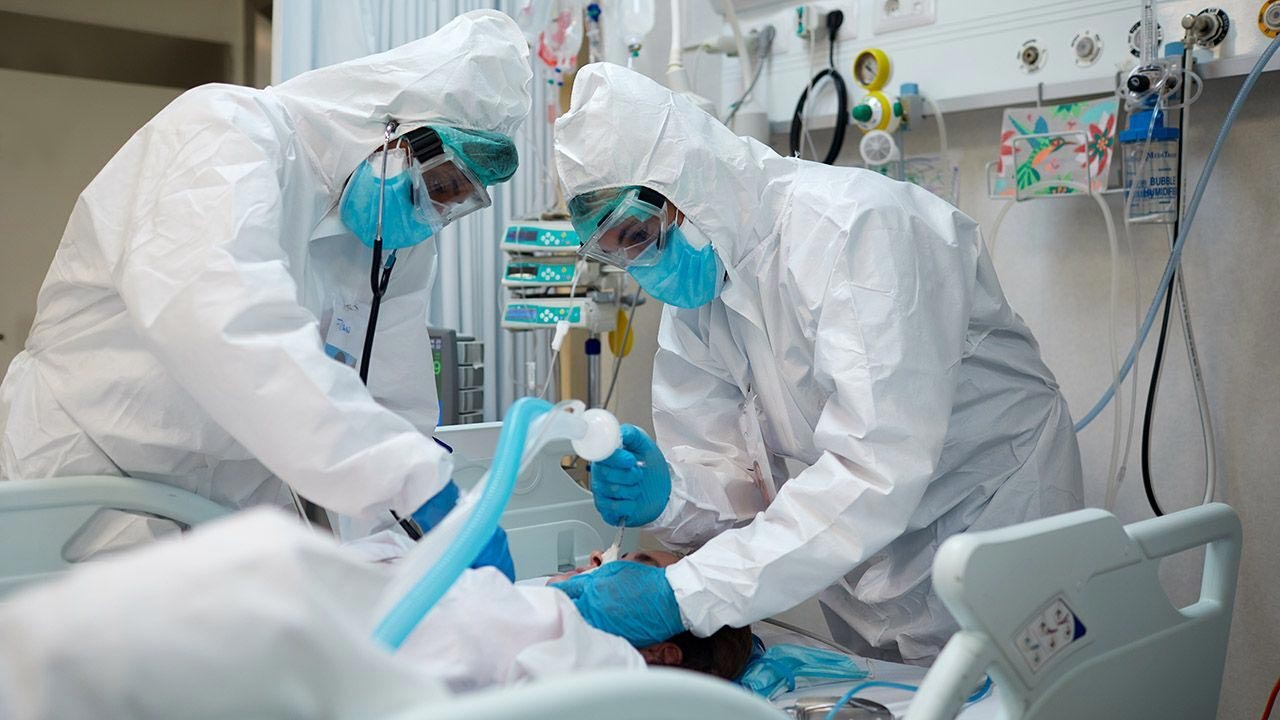Doctors Identify Two Distinct Types of COVID-19-Associated Acute Respiratory Distress Syndrome
0 View
Share this Video
- Publish Date:
- 15 April, 2021
- Category:
- Covid
- Video License
- Standard License
- Imported From:
- Youtube
Tags

About a quarter of ARDS patients have disease characteristics that put them at an increased risk of death within the first month of hospitalization.
About one in four patients hospitalized for the acute respiratory distress syndrome (ARDS) associated with severe COVID-19 infections may have a distinct phenotype (disease presentation) or biochemical profile associated with organ dysfunction, blood clotting abnormalities and increased risk on death than patients with other, seemingly similar forms of the disease, researchers at Massachusetts General Hospital (MGH) have found.
Of the 263 patients admitted to the intensive care unit (ICUs) of HGH for respiratory failure due to severe COVID-19 infection, 70 (26.6%) had elevated levels of biomarkers in the bloodstream, indicating disturbed blood clotting, increased inflammation and organ dysfunction in the other patients, report Sylvia Ranjeva MD, PhD, and Lorenzo Berra, MD, researchers in the Department of Anesthesia, Critical Care and Pain Medicine, and their colleagues in that department and Pulmonary and Critical Care Medicine and Respiratory Care at MGH.
Patients with this more severe phenotype were twice as likely to die, despite minimal differences in respiratory mechanics or ARDS severity between the two phenotypes.
Their findings are published in EClinicalMedicine, an open access journal from The Lancet group.
ARDS is a collective term for lung damage that can be caused by many different conditions, such as pneumonia, severe flu, trauma, blood infections or inflammation of the pancreas.
The syndrome can be life-threatening and patients may require mechanical ventilation, but it has been difficult for clinicians to develop effective therapies because of the wide spectrum of causes associated with it.
Lung care experts typically base treatment decisions for patients with ARDS on how their bodies and immune systems respond to disease. Previous studies have suggested that some patients have what is called a ‘hyperinflammatory’ phenotype, because their bodies respond to illness or injury by releasing a stream of cytokines (proteins released in response to inflammation) and other substances to fight the disease. Several studies have shown that patients with the hyperinflammatory phenotype have an approximately 20% greater risk of death compared to other patients.
But until now, it has been unclear whether patients’ responses to ARDS from other causes are the same as responses to ARDS associated with COVID-19, Ranjeva explains.
“The motivation for our work is that if we could identify subgroups of patients with different biochemical characteristics, and those patients respond differently to treatment or have different clinical outcomes, we would be one step closer to a more mechanism-based understanding of ARDS, ” she says.
The researchers identified two different phenotypes of COVID-19-associated ARDS that showed significant differences in their responses to disease and in the risk of death, despite minimal differences in respiratory function and oxygenation levels.
Patients with the less common but more severe phenotype can be identified by an increase in markers of organ dysfunction (e.g. renal function and cardiac biomarkers) and by increased evidence of blood clotting dysfunction (coagulopathy).
Their results suggest that disruption in the normal regulation of blood vessels and circulation could be a key feature of critical illness, severe symptoms, and death related to COVID-19 infections, the researchers write.
Reference: April 15, 2021, Clinical Medicine.
Co-authors with Ranjeva and Berra are Riccardo Pinciroli, MD, Evan Hodell, MD, Ariel Mueller, MA, C. Corey Hardin, MD, PhD, and B. Taylor Thompson, MD, all from MGH.
The study is supported by the Reginald Jenney Endowment Chair at Harvard Medical School to Berra, Lorenzo Berra Sundry Funds at MGH, and laboratory funds from the Anesthesia Center for Critical Care Research in the Division of Anesthesia, Critical Care and Pain Medicine at MGH.










